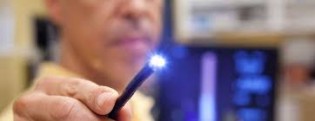What:
This is a procedure where a long, flexible, thin (1 cm diameter) camera is passed through the mouth to examine the lining of the oesphagus (food tube/gullet), stomach and parts of the duodenum (small bowel).

Why:
There are lots of different reasons why you may want to have or have been suggested to have a gastroscopy.
This may include (see other patient information sheets)
- Persistent reflux
- Abdominal pain
- Concern about bleeding
- Anaemia (low blood count) or low ferritin (iron levels)
- Unintentional weight loss
- Bloating
- Concern with a family history of cancer in these areas
- Part of a workup for a change in bowel habits, with constipation, diarrhoea or both
- Abnormal blood tests or scans that you have had performed
How:
I hold the camera and with my left hand, move wheels which move and steer the tip of the camera through the mouth and into the food tube. This is behind the tube where you breathe (i.e the trachea and lungs), therefore it doesn’t impact your breathing at all.

What do I need to do to prepare:
You'll be advised whether you need to stop taking any of your medications beforehand, in particular if you are on blood thinners.
You should not have anything to eat for 6 hours before the test, then nothing to drink for 2 hours before the test. This is so the stomach is empty and everything can be clearly seen.
Does it hurt?
You will have a local anaesthetic throat spray which lasts for 30 minutes and helps to remove any gag reflex (some peoples are more sensitive than others!) In addition, a sedative medication is given to make the gastroscopy more comfortable. Some people prefer to use none, although this is not common. Some patients prefer very light sedation, so they can watch the procedure on the monitor. Others prefer to be much sleepier, and it is also possible to arrange to have an anaesthetist give very strong sedation so that you will be completely asleep and unaware of anything. We can talk about what you like before the test.
There are many different techniques that as the endoscopist, I can use to make the procedure both as safe and as painless as possible.
How long does it take:
This is variable depending on the indication for the test and what is found, but generally lasts between 5 and 20 minutes.
What happens afterwards/ How soon do I get my results
You will be able to eat and drink as the sedation wears off, and should feel back to normal in 30-60 minutes. I will come to see you to discuss the findings and any follow-up that may be required. We will provide you with everything written down and colour photographs of the inside of the bowel.
If a biopsy has been taken (small sample taken painlessly from the inside) we will require a 7-10 wait whilst the laboratory processes and analyses this.
